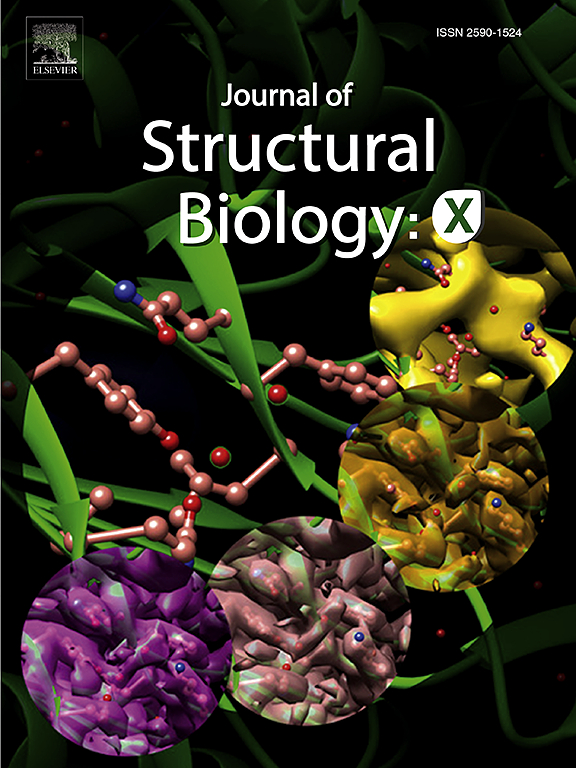描述硅藻胞外硅化的有机鞘的结构组织
IF 2.7
3区 生物学
Q3 BIOCHEMISTRY & MOLECULAR BIOLOGY
引用次数: 0
摘要
无机材料的纳米图形化是当代科学的一项具有挑战性的任务。因此,单细胞生物能够形成复杂形状的生物矿物是值得注意的。一个突出的例子是硅藻的硅细胞壁,它通常形成于专门的胞内细胞器中。在这样的细胞器内,生物调控通过各种有机大分子和无机前体的协同活动进行。然而,研究表明,硅藻属Chaetoceros特有的一种特殊类型的被称为刚毛的细长二氧化硅结构在细胞外形成,这使人们对这种硅化过程的调控机制提出了疑问。在这里,我们研究了一种相对较大的物种,rostratus毛羽,它形成了长而复杂的刚毛。我们使用细胞内低温电子断层扫描来成像细胞形成的自然状态。高分辨率3D数据显示,细胞膜外的二氧化硅形成涉及覆盖新形成集的连续有机护套。这种护套具有复杂的结构,通过结构大分子定位在距离二氧化硅几十纳米的地方,可能参与了结构调节。阐明这一微妙生命系统的结构成分将为了解受控矿化的生物策略提供新的机会。本文章由计算机程序翻译,如有差异,请以英文原文为准。

Structural organization of the organic sheath that delineates extracellular seta silicification in diatoms
Nanopatterning of inorganic materials is a challenging task for contemporary science. It is therefore remarkable that unicellular organisms can form intricately shaped biominerals. A prominent example is the silica cell wall of diatoms, which usually forms in specialized intracellular organelles. Inside such an organelle, biological regulation proceeds via the concerted activity of various organic macromolecules and inorganic precursors. However, it was shown that a specific type of elongated silica structures, called setae, which characterizes the diatom genus Chaetoceros, form extracellularly, raising questions about the regulatory mechanisms of this silicification process. Here, we study a relatively large species, Chaetoceros rostratus, that forms long and intricate setae. We used in-cell cryo electron tomography to image the native state of seta formation. The high-resolution 3D data show that silica formation outside the cell membrane involves continuous organic sheath that covers the newly formed seta. This sheath has an elaborate structure and is positioned tens of nanometers away from the silica by structural macromolecules that might be involved in architectural regulation. Elucidating the structural components of this delicate living system will allow for new opportunities to learn about the biological strategies for controlled mineralization.
求助全文
通过发布文献求助,成功后即可免费获取论文全文。
去求助
来源期刊

Journal of structural biology
生物-生化与分子生物学
CiteScore
6.30
自引率
3.30%
发文量
88
审稿时长
65 days
期刊介绍:
Journal of Structural Biology (JSB) has an open access mirror journal, the Journal of Structural Biology: X (JSBX), sharing the same aims and scope, editorial team, submission system and rigorous peer review. Since both journals share the same editorial system, you may submit your manuscript via either journal homepage. You will be prompted during submission (and revision) to choose in which to publish your article. The editors and reviewers are not aware of the choice you made until the article has been published online. JSB and JSBX publish papers dealing with the structural analysis of living material at every level of organization by all methods that lead to an understanding of biological function in terms of molecular and supermolecular structure.
Techniques covered include:
• Light microscopy including confocal microscopy
• All types of electron microscopy
• X-ray diffraction
• Nuclear magnetic resonance
• Scanning force microscopy, scanning probe microscopy, and tunneling microscopy
• Digital image processing
• Computational insights into structure
 求助内容:
求助内容: 应助结果提醒方式:
应助结果提醒方式:


